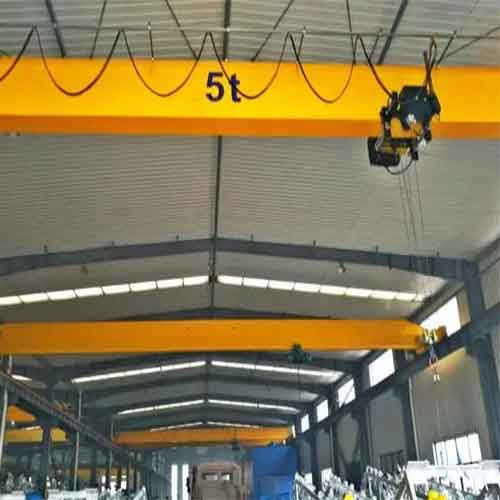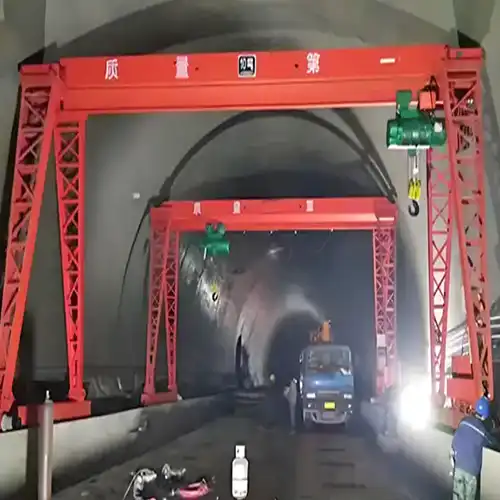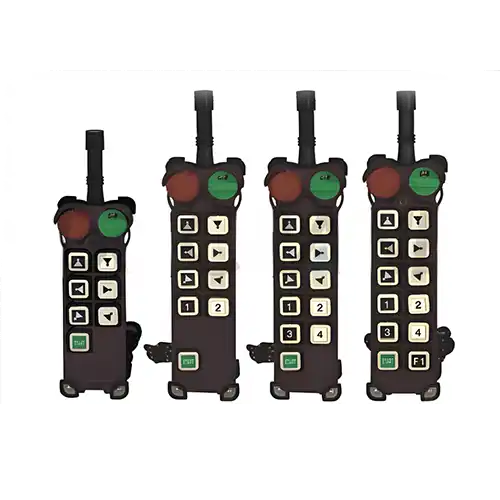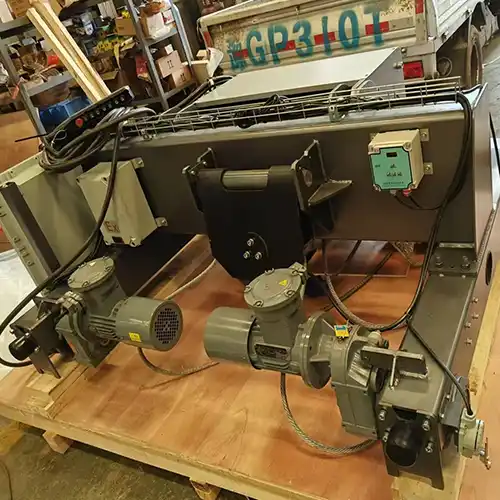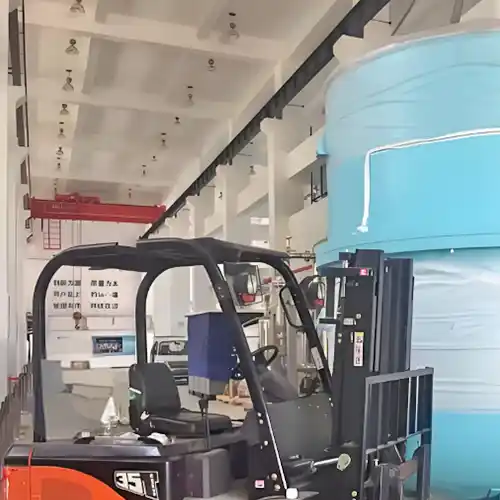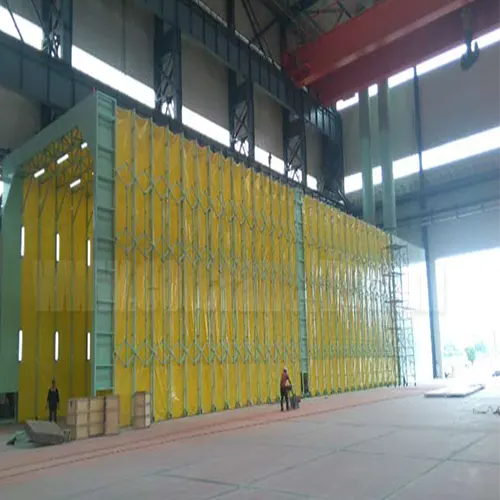Explosion Proof Overhead Crane for Cement Factory 5 Ton, 10 Ton
Explosion proof overhead crane for cement factory. Custom bridge crane with explosion proof design for cement factory to ensure safety, hot sale 5 ton, 10 ton.
Category: Hazardous Environment Cranes
Your Trusted Explosion Proof Crane Manufacturer & Supplier
Explosion Proof Overhead Crane for Cement Factory 5 Ton, 10 Ton
Explosion proof overhead crane for cement factory. Custom bridge crane with explosion proof design for cement factory to ensure safety, hot sale 5 ton, 10 ton.
Explosion-Proof Overhead Cranes in Cement Manufacturing
Cement manufacturing plants are dynamic environments where safety concerns loom large due to the presence of hazardous elements integral to the production process. Among the critical challenges faced in these facilities, the risk of potential explosions stands out as a prominent threat to both personnel and infrastructure. In the quest to ensure a secure working environment, the deployment of specialized equipment emerges as a pivotal solution.
Overview of Safety Concerns in Cement Manufacturing Plants
The nature of cement production involves the handling and processing of raw materials in environments where combustible dust, gases, and other volatile substances are prevalent. These conditions create an environment ripe for potential explosions, necessitating stringent safety measures.
Notably, cement plants feature numerous zones classified as potentially explosive atmospheres. Areas such as material handling sections, grinding mills, and storage silos often harbor dust and gases, elevating the risk of ignition and subsequent explosions.
To counteract these hazards, the introduction of specialized equipment, particularly explosion-proof overhead cranes, becomes imperative. These cranes are specifically engineered to operate safely in environments with combustible materials and gases, providing a shield against potential ignition sources that could lead to catastrophic incidents.
Explosion-proof overhead cranes stand as a testament to innovation in industrial safety, incorporating unique features and design elements that mitigate the risks associated with hazardous environments prevalent in cement manufacturing plants.
Explosion Proof Hoist and Cranes
Explosion-proof hoists and cranes are often necessary in certain areas or processes within the cement manufacturing and handling industry. Cement manufacturing involves various stages where explosive atmospheres may exist due to the presence of fine particles, dust, and gases like coal dust, limestone dust, and other combustible materials. These conditions pose a potential risk of explosion or fire.
Explosion-proof hoists and cranes are designed and constructed to operate safely in hazardous or potentially explosive environments where there's a risk of igniting flammable gases, vapors, or combustible dust. These specialized hoists and cranes are equipped with features to mitigate the risk of ignition and minimize the impact of any potential explosion. Some key aspects include:
- Sealed Components: Explosion-proof hoists and cranes are constructed with sealed motors, electrical components, and enclosures to prevent the entry of dust or flammable substances that could cause sparks or ignition.
- Non-Sparking Materials: They use non-sparking materials and coatings to reduce the risk of generating sparks during operation.
- Explosion-Proof Controls: Specialized electrical systems and controls are employed to prevent sparks and maintain safe operation even in potentially explosive atmospheres.
- Certification and Compliance: These hoists and cranes meet specific industry standards and certifications (such as ATEX, IECEx, or other local regulatory standards) for use in hazardous environments.
Areas in a cement plant where explosion-proof hoists and cranes might be needed include:
- Raw Material Handling: Areas where raw materials like coal, limestone, and other substances are processed, transported, or stored.
- Grinding and Milling Processes: Equipment used for grinding and milling raw materials can produce fine particles and dust that may create explosive atmospheres.
- Storage and Silo Areas: Silos where powdered materials are stored can generate dust and potentially hazardous environments.
- Mixing and Blending Operations: Areas where different materials are mixed and blended to create the cement mixture.
Employing explosion-proof hoists and cranes in these critical areas helps mitigate the risk of explosions, protects workers, and ensures the safe and continuous operation of the cement manufacturing and handling processes in potentially hazardous environments.
Types of Explosion-Proof Overhead Cranes for Cement Manufacturing
The classification of explosion-proof cranes used in cement manufacturing can be based on various criteria, such as design, application, functionality, and operational environment. Here's a classification based on different terms and classifications:

Single Girder Explosion-Proof Overhead Cranes
Features:
Simplified Design:
- Incorporates a single bridge girder for moderate load-bearing capacity.
- Streamlined construction ideal for confined spaces within cement plants.
Adaptability:
- Suitable for handling materials in areas with limited headroom or space restrictions.
- Offers versatility for various material handling tasks within specific zones of the plant.
Efficiency and Maneuverability:
- Provides ease of operation and maneuverability due to its lighter weight and simplified design.
- Well-suited for tasks involving lighter loads or confined working areas.
Applications:
Material Transport and Handling:
- Used for lifting and moving materials such as raw components, equipment, or finished products within confined or smaller sections of the cement plant.
- Suitable for loading and unloading operations in restricted spaces.
Maintenance and Assembly Tasks:
- Ideal for maintenance activities, equipment installation, or repair tasks within confined areas where heavier cranes may not be feasible.
- Facilitates precise handling during assembly or maintenance of machinery and components.

Double Girder Explosion-Proof Overhead Cranes:
Enhanced Load Capacity:
- Equipped with two parallel bridge girders offering higher stability and increased load-bearing capacity.
- Suitable for handling heavier materials or bulk goods within cement manufacturing plants.
Sturdiness and Stability:
Provides heightened stability and robustness compared to single girder cranes, allowing for handling bulkier loads and increased operational durability.
Versatility and Adaptability:
- Offers flexibility in lifting and transporting heavy materials across various sections of the plant.
- Enables precise control and efficient handling of materials in larger working areas.
Applications:
Heavy Material Handling:
- Used for lifting and transporting heavier raw materials like aggregates, clinker, or machinery parts within cement plants.
- Ideal for loading and unloading heavy components in larger spaces.
Industrial Process Operations:
- Facilitates operations in critical areas such as material blending, grinding mills, or storage facilities where heavier lifting capabilities are essential.
- Enables efficient material handling across expansive or high-ceiling areas within the plant.
Both Single Girder and Double Girder Explosion-Proof Overhead Cranes play integral roles in cement manufacturing by facilitating material handling operations in different capacities and spaces, catering to specific load requirements within confined or expansive working environments.
Here are the features and applications of Top Running, Under Running, Jib, and Gantry Explosion-Proof Overhead Cranes utilized in cement manufacturing:

Top Running Explosion-Proof Overhead Cranes:
Elevated Runways:
- Operates on elevated runways providing maximum lifting heights and coverage across various plant zones.
- Offers efficient vertical lifting capabilities and enhanced maneuverability.
Versatility:
- Enables versatility in handling materials within expansive working areas.
- Provides optimal lifting heights for efficient material transport across different sections of the cement plant.
Applications:
Bulk Material Handling:
- Used for lifting and transporting bulk materials such as aggregates, cement, or finished products within larger operational areas.
- Facilitates efficient material flow in critical zones like storage facilities or production areas.
High-Ceiling Operations:
- Ideal for operations requiring extensive vertical lifting capacities, such as feeding materials into high-height machinery or storage.
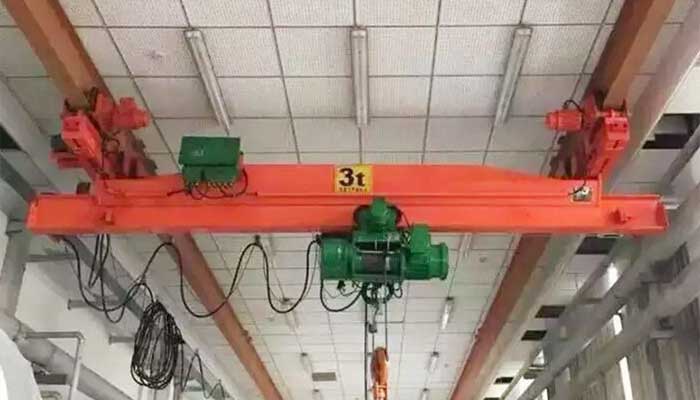
Under Running Explosion-Proof Overhead Cranes:
- Lower Side Tracks: - Operates on tracks mounted on the lower side of runways, suitable for areas with space limitations. - Allows efficient material handling in compact or confined spaces within the cement plant.
- Space Optimization: - Designed to optimize space utilization by utilizing the lower side tracks, making it suitable for restricted headroom areas.
- Applications: - Used in areas with limited space, where traditional overhead cranes might not be feasible due to height restrictions. - Suitable for handling materials precisely in restricted spaces like storage, assembly, or maintenance areas.

Explosion-Proof Jib Cranes, 5 ton explosion proof jib crane for sale Indonesia for your reference
- Wall-Mounted or Free-Standing Configurations: - Available in either wall-mounted or free-standing setups to accommodate various spatial requirements within the cement plant.
- Localized Handling Tasks: - Designed for specific localized material handling tasks or maintenance work within hazardous zones or confined areas.
- Applications: Precision Handling: - Utilized for localized tasks requiring precision, such as equipment maintenance, tool handling, or material transfer in limited working spaces.
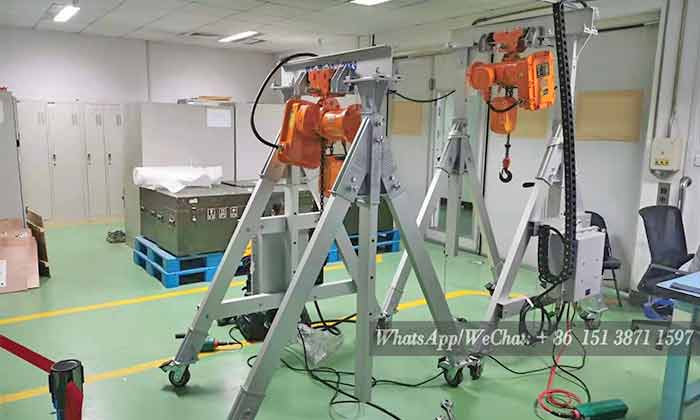
Explosion-Proof Gantry Cranes, 200kg +200kg Small Explosion Proof Gantry Crane Project Reference
- Rail-Mounted or Rubber-Tired Versions: - Offered in rail-mounted or rubber-tired variants suitable for outdoor use in stockyards or open areas within cement manufacturing facilities.
- Bulk Material Handling: - Designed for efficient handling of bulk materials, aiding in loading, unloading, or stockpile management in outdoor environments.
- Applications: Outdoor Material Handling: - Deployed for outdoor material transport and handling operations involving heavy loads, bulk materials, or goods in open-air environments. - Ideal for stockyards or outdoor storage areas where efficient movement of materials is crucial.
These varied types of explosion-proof overhead cranes serve specific purposes within cement manufacturing plants, catering to diverse spatial requirements, material handling needs, and operational environments, while ensuring safety and efficiency.
Based on Application:
Here are the features and applications of Material Handling and Maintenance Explosion-Proof Cranes utilized in cement manufacturing:

Material Handling Explosion-Proof Cranes with Grab Bucket for Bulk Material Handling
Heavy-Duty Design:
- Engineered with robust structures to withstand heavy loads typically associated with raw materials in cement plants.
- Equipped with explosion-proof components ensuring safe material handling in hazardous environments.
Versatility in Material Types:
- Adapted to handle various types of raw materials such as aggregates, clinker, cement, or bulk goods efficiently.
- Designed with features suited for lifting, transporting, and stockpiling materials across different sections of the plant.
Applications:
Raw Material Transport:
- Used for efficient handling of raw materials from storage areas to production lines or specific operational zones within the cement plant.
- Facilitates loading and unloading operations for different types of materials used in cement manufacturing processes.
Bulk Goods Management:
- Ideal for managing bulk goods and heavier materials, aiding in stockpile management and maintaining material flow during production.

Maintenance Explosion-Proof Cranes for General Material Handling and Reparing Work
Precision Handling Capabilities:
- Engineered with precise control systems to ensure accurate and controlled movements for maintenance tasks.
- Equipped with explosion-proof components and safety features to safeguard maintenance personnel and equipment.
Adaptability for Maintenance Tasks:
- Configured to handle specialized equipment used during maintenance operations within potentially explosive areas.
- Designed with features promoting ease of access and maneuverability in confined spaces.
Applications:
Equipment Handling during Maintenance:
- Utilized for lifting, positioning, or replacing machinery and components within the cement plant during maintenance procedures.
- Ensures safe and precise handling of heavy equipment, reducing downtime and ensuring efficient repairs.
Precision Operations in Hazardous Zones:
- Specifically deployed in areas where explosive atmospheres might exist, ensuring safety while performing maintenance or repair tasks.
- Supports routine inspections, servicing, and repairs in sensitive and potentially dangerous environments.
These distinct types of explosion-proof overhead cranes serve crucial roles in cement manufacturing, addressing specific requirements related to material handling and maintenance operations within potentially hazardous environments, contributing to safety, efficiency, and operational continuity.
Based on Operational Environment:
Here are the features and applications of Indoor and Outdoor Explosion-Proof Cranes based on their operational environments within cement manufacturing:

Indoor Explosion-Proof Cranes:
Features:
Enclosed Operation:
- Specifically designed to operate within enclosed or indoor sections of cement plants where explosive atmospheres might exist.
- Incorporates explosion-proof components and safety features ensuring safe operations in potentially hazardous environments.
Space Optimization:
- Engineered for operation in confined spaces, ensuring efficient material handling without compromising safety.
- Adheres to strict safety standards for operation in enclosed areas with potential explosive atmospheres.
Applications:
Material Handling in Confined Spaces:
- Used for lifting, transporting, and handling materials within confined indoor sections of cement plants where explosive atmospheres might be present.
- Facilitates material flow, loading/unloading, or equipment handling in indoor operational zones.
Precision Operations:
- Supports precise and controlled movements required for handling materials or performing tasks in restricted indoor environments.
- Ensures safety while executing tasks in enclosed spaces with potential explosion risks.

Outdoor Explosion-Proof Cranes:
Features:
Weatherproof Construction:
- Engineered with weather-resistant materials to withstand outdoor elements like rain, sunlight, and varying temperatures.
- Incorporates specialized coatings and durable structures suitable for outdoor usage.
Robust Design for Open-Air Environments:
- Designed for safe and efficient material handling in open-air areas within cement manufacturing facilities.
- Adaptable to outdoor conditions while maintaining explosion-proof standards.
Applications:
Bulk Material Handling in Open Spaces:
- Used for outdoor material transport, loading/unloading of bulk materials in open-air environments such as stockyards or open storage areas.
- Facilitates efficient handling of materials like aggregates, cement, or finished products outdoors.
Heavy-Duty Operations:
- Suitable for heavy-duty tasks in outdoor settings, involving larger loads, equipment handling, or operations that require outdoor maneuverability.
- Ensures safe and efficient operations while adhering to explosion-proof standards in open-air working environments.
Based on Functionality:
Here are the features and applications of Load-Specific and Specialized Function Explosion-Proof Cranes based on functionality:
Load-Specific Explosion-Proof Cranes:
Load Capacity Variations:
- Available in different load-bearing capacities including light-duty, medium-duty, or heavy-duty configurations.
- Designed with specific load-bearing capabilities to match diverse material handling requirements within cement manufacturing plants.
Structural Sturdiness:
- Constructed with reinforced structures and components to accommodate various load capacities safely.
- Adheres to explosion-proof standards ensuring safe operations within potentially hazardous environments.
Applications:
Tailored Load Handling:
- Light-duty cranes cater to lighter material handling tasks and precision operations within specific plant zones.
- Medium-duty and heavy-duty cranes handle heavier loads such as aggregates, clinker, or machinery parts across different operational areas.
Adaptability to Material Requirements:
- Enables the handling of diverse raw materials and equipment by matching the appropriate load-specific crane to specific material handling needs.
Specialized Function Explosion-Proof Cranes:
Functional Specialization:
- Tailored for specific functions like lifting, stacking, precise positioning, or continuous operation in potentially explosive environments.
- Equipped with specialized features to perform dedicated tasks efficiently and safely.
Safety and Precision Controls:
- Designed with advanced control systems and safety mechanisms to ensure precise and secure operations in specialized tasks.
- Compliance with explosion-proof standards to maintain safety while executing specific functions.
Applications:
Specialized Handling Operations:
- Adapted for specific tasks such as stacking, positioning heavy equipment, or continuous material transport within hazardous zones.
- Facilitates precision movements and specialized operations required in specific sections of the cement manufacturing process.
Continuous Operations in Hazardous Areas:
- Deployed for continuous and repetitive tasks like continuous pouring, stacking, or precise positioning of materials or components in potentially explosive environments.
- Ensures consistent and reliable operations while adhering to strict safety standards.
These distinct categories of explosion-proof overhead cranes based on functionality serve diverse material handling needs and specialized tasks within cement manufacturing plants, ensuring safety, efficiency, and accuracy in operations tailored to various load requirements and specific functions.
This classification distinguishes between explosion-proof cranes designed specifically for indoor operations within confined spaces where explosive atmospheres may exist and those engineered for safe and efficient material handling in outdoor areas of cement manufacturing plants, contributing to safety and productivity in different operational environments.
Importance of Safety Measures in Hazardous Environments
In the intricate landscape of cement manufacturing, safety stands as an indispensable cornerstone, particularly in the face of potentially explosive atmospheres inherent to the industry. Understanding the risks intertwined with these environments and complying with stringent regulatory standards becomes paramount to safeguarding lives and assets.
Risks Associated with Explosive Atmospheres in Cement Plants
The operational facets within cement plants present an amalgamation of volatile elements prone to creating explosive atmospheres. These environments are characterized by the presence of combustible materials, such as pulverized coal, raw meal, and various dust particles, coupled with the potential accumulation of flammable gases.
In zones like grinding mills, material handling areas, and storage silos, the blending and processing of raw materials often generate fine dust particles suspended in the air. A minor ignition source, such as a spark or heat from equipment operation, could trigger an explosion with devastating consequences.
Regulatory Standards and Compliance Requirements
Recognizing the gravity of these risks, regulatory bodies and safety standards organizations have established stringent guidelines to ensure safety and mitigate potential hazards in industrial settings, including cement plants. These standards encompass various aspects, ranging from equipment design and operational protocols to worker training and hazard management.
Compliance with these regulations mandates a comprehensive approach to safety, compelling industries to invest in specialized equipment like explosion-proof overhead cranes to mitigate risks effectively. These cranes, built with stringent adherence to safety standards, play a pivotal role in fortifying safety measures within hazardous zones of cement plants.
Explosion-proof overhead cranes emerge as a critical safety asset, addressing the risks associated with explosive atmospheres, complying with regulatory mandates, and augmenting the safety infrastructure of cement manufacturing facilities.
Understanding Explosion-Proof Overhead Cranes
In the relentless pursuit of ensuring safety within hazardous environments prevalent in cement manufacturing, the advent of explosion-proof overhead cranes stands as a testament to innovation and meticulous engineering. Understanding the nuanced design features and operational functionality of these specialized cranes becomes imperative to grasp their pivotal role in mitigating risks.
Definition and Specific Design Features
Explosion-proof overhead cranes are meticulously engineered lifting devices crafted with specialized design elements to operate securely in areas susceptible to explosive atmospheres. These cranes are constructed following stringent safety protocols, integrating several key features to mitigate the risks of ignition and explosion in hazardous zones.
Specific Design Features Include:
- Enclosed components and wiring systems to prevent sparking
- Explosion-proof motors and electrical fittings to minimize heat generation
- Sealed enclosures to prevent the ingress of potentially hazardous particles or gases
- Structural robustness and construction with non-sparking materials
Functionality and Operation in Hazardous Zones
The operational functionality of explosion-proof overhead cranes revolves around their ability to perform lifting tasks efficiently while ensuring stringent safety measures in potentially explosive environments. These cranes are adept at seamlessly maneuvering and lifting heavy loads within hazardous zones, all while adhering to safety protocols.
Key Operational Aspects:
- Precise control mechanisms to ensure safe and controlled lifting operations
- Remote or centralized control systems for operational flexibility and safety
- Continuous monitoring of electrical systems to prevent potential ignition sources
- Maintenance of explosion-proof certifications and compliance with safety standards
Explosion-proof overhead cranes embody the pinnacle of safety-centric engineering, playing a pivotal role in cement manufacturing plants' safety paradigms. Their specialized design and operational prowess ensure effective material handling while mitigating the inherent risks of explosive atmospheres.
Features and Specifications of Explosion-Proof Overhead Cranes
Explosion-proof overhead cranes, meticulously engineered for operation within hazardous zones, integrate an array of design elements and specifications to ensure utmost safety while performing critical lifting tasks in cement manufacturing environments.
Design Components Ensuring Safety in Explosive Environments
Intrinsically Safe Components:
- Explosion-proof overhead cranes are equipped with intrinsically safe electrical components, meticulously designed to eliminate the risk of sparking or heat generation.
- Enclosed motors, switches, and wiring systems minimize the potential for ignition sources, ensuring operational safety.
Sealed Enclosures and Ventilation:
- These cranes feature sealed enclosures and ventilation systems designed to prevent the ingress of potentially hazardous particles or gases while maintaining an optimal operational environment.
Materials Used and Specialized Construction
Non-Sparking Construction:
- The construction of explosion-proof overhead cranes involves the utilization of non-sparking materials, reducing the risk of generating sparks in areas with combustible dust or gases.
- High-quality materials like stainless steel or corrosion-resistant alloys are employed to enhance durability and safety.
Robust Construction Standards:
- These cranes adhere to stringent construction standards, ensuring structural integrity and resistance to environmental factors prevalent in cement manufacturing plants.
Control Systems and Safety Mechanisms
Safety-Oriented Control Systems:
- The control systems of explosion-proof overhead cranes prioritize safety, integrating fail-safe mechanisms and emergency shutdown protocols to mitigate potential hazards.
- Remote or centralized control systems enable operators to manage operations from a safe distance, ensuring personnel safety.
Continuous Monitoring and Compliance:
- These cranes undergo rigorous monitoring of electrical systems, adhering to strict compliance requirements and safety standards.
- Regular inspections and adherence to explosion-proof certifications ensure ongoing safety compliance.
Explosion-proof overhead cranes, with their meticulously engineered design components, specialized construction, and safety-oriented control systems, represent a paramount safety asset in cement manufacturing plants, effectively mitigating the risks associated with potentially explosive environments.
Benefits of Using Explosion-Proof Overhead Cranes in Cement Plants
The deployment of explosion-proof overhead cranes within the complex operational landscapes of cement manufacturing plants bestows several crucial benefits, significantly amplifying safety measures and operational efficiency.
Preventing Ignition Sources in Potentially Explosive Areas
Mitigating Risk of Ignition:
- Explosion-proof overhead cranes play a pivotal role in preventing potential ignition sources in areas susceptible to explosive atmospheres within cement plants.
- The intrinsically safe design components and specialized construction of these cranes effectively mitigate the risk of sparking or heat generation, thereby minimizing the likelihood of igniting combustible materials or gases.
Enhancing Worker Safety and Accident Prevention
Augmenting Workplace Safety:
- By operating within hazardous zones without posing risks of ignition, explosion-proof overhead cranes substantially enhance worker safety.
- These cranes enable personnel to execute lifting operations confidently in potentially volatile environments, significantly reducing the risk of accidents or injuries.
Minimizing Downtime and Maintenance Costs
Optimizing Operational Continuity:
- The robust design and compliance with safety standards in explosion-proof overhead cranes contribute to minimizing downtime due to safety-related interruptions.
- Additionally, adherence to stringent safety protocols and reduced risk of equipment failure in explosive atmospheres result in decreased maintenance costs over the crane's lifecycle.
The integration of explosion-proof overhead cranes in cement manufacturing plants goes beyond mere safety compliance; it profoundly impacts operational efficiency, worker welfare, and the overall cost-effectiveness of plant operations.
Specific Applications and Considerations in Cement Manufacturing
Explosion-proof overhead cranes, engineered to operate within hazardous zones, find crucial applications within various segments of cement manufacturing plants. Understanding explosion proof crane specific applications and tailored features is essential for maximizing safety and efficiency.
Areas within Cement Plants Requiring Explosion-Proof Cranes
Critical Zones Necessitating Safety Measures:
- Cement plants encompass several critical areas prone to potentially explosive atmospheres, including material handling sections, grinding mills, storage silos, and blending units.
- Explosion-proof overhead cranes are indispensable in these zones, ensuring safe material handling operations while minimizing the risk of igniting combustible materials or gases.
Tailored Features for Handling Hazardous Materials
Adaptability to Hazardous Materials:
- Explosion-proof overhead cranes are equipped with features tailored to handle hazardous materials prevalent in cement manufacturing, such as raw meal, pulverized coal, and other combustible particles.
- The design and construction of these cranes incorporate materials and components resistant to corrosion, abrasion, and potential chemical exposure.
Case Studies or Examples of Successful Implementation
Real-world Applications Demonstrating Efficacy:
- Several cement manufacturing plants have successfully implemented explosion-proof overhead cranes in critical zones, witnessing a substantial enhancement in safety and operational efficiency.
- Case studies showcasing successful deployment and the resultant improvements in safety standards and operational continuity serve as testimonials to the efficacy of these cranes.
Understanding the specific applications, tailored features, and successful implementations of explosion-proof overhead cranes in cement manufacturing plants underscores their pivotal role in fortifying safety standards and optimizing operations within hazardous zones.
Compliance and Regulatory Standards
In the intricate landscape of industrial safety, adherence to stringent regulations and industry standards stands as a cornerstone for ensuring the deployment of explosion-proof overhead cranes in cement manufacturing plants.
Adherence to Safety Regulations and Industry Standards
Stringent Safety Protocols:
- Cement manufacturing facilities operate within a regulatory framework stipulating stringent safety protocols to mitigate potential hazards.
- Explosion-proof overhead cranes deployed in these hazardous zones must align with industry-specific safety regulations and comply with safety standards laid down by authoritative bodies.
OSHA and Other Safety Standards:
- Compliance with Occupational Safety and Health Administration (OSHA) guidelines and other pertinent safety standards is paramount in ensuring the safe operation of explosion-proof overhead cranes within cement plants.
- These standards encompass various aspects, including design, installation, operation, and maintenance protocols specific to cranes operating in potentially explosive environments.
Certifications and Compliance Requirements:
- Certifications validating explosion-proof capabilities, such as ATEX (Atmosphères Explosibles) certification in Europe or NEC (National Electrical Code) classifications in the United States, are imperative for explosion-proof overhead cranes operating in hazardous zones.
- Rigorous compliance procedures and adherence to specific criteria outlined in these certifications are essential for ensuring the safety and efficacy of these cranes.
The deployment of explosion-proof overhead cranes within cement manufacturing plants necessitates meticulous attention to compliance procedures and adherence to safety regulations and industry standards. Compliance with these stringent protocols ensures the highest levels of safety for personnel and assets while optimizing operational efficiency.
Get Your Custom Cement Factory Explosion Proof Cranes
Pivotal Safety Assets:
- Explosion-proof overhead cranes epitomize safety-centric engineering, equipped with specialized features and meticulous design elements to operate within potentially explosive environments.
- Their intrinsic ability to prevent ignition sources while performing critical lifting tasks within hazardous zones underscores their paramount importance in cement manufacturing.
- Mitigating Risks, Augmenting Safety:
- These cranes play a pivotal role in mitigating the risks associated with explosive atmospheres, ensuring personnel safety and protecting assets from potential hazards.
Safety and Operational Synergy:
- By seamlessly integrating safety protocols with operational efficacy, explosion-proof overhead cranes amplify safety standards while optimizing material handling operations within cement plants.
- Their deployment results in a symbiotic relationship between safety enhancement and operational continuity, contributing to an environment conducive to efficiency and reliability.
The integration of explosion-proof overhead cranes within cement manufacturing plants stands as a testament to the industry's unwavering commitment to safety and operational excellence. Their indispensable role in fortifying safety protocols while enhancing operational efficiency resonates profoundly within the industrial landscape.
As cement plants continue their pursuit of heightened safety standards and operational efficacy, the significance of explosion-proof overhead cranes remains pivotal, ensuring a harmonious balance between safety imperatives and operational requirements.
Main Projects
Related Products

Supplied three grab bucket crane kits to Indonesia, enhancing garbage handling efficiency with high load capacity and reliable performance.
Free consultation to Confirm Parameters & Specifications and Get
Latest Crane Price & Crane Rate.
- Types of overhead cranes : _______?
- Optional: Overhead travelling crane, goliath gantry crane,Slewing jib crane, Single girder or double girder crane,small portable crane or kbk crane, etc.
- Capacity of overhead crane: _______?
- Optional: 0.25ton, 0.5 ton, 1 ton, 2 ton, 3ton, 5 ton, 10 ton,15ton, 20ton, 25 ton, 30ton,35ton, up to 550ton, etc.
- Crane span & lifting height : _______?
- Crane travelling length : _____?
- Control of overhead crane:_______?
- Optional: pendant/ remote/cabin control
- Voltage supply of overhead crane:_____?
- Eg,: 380V50/60HZ,3Phase or others,etc.
- Application/usage of crane:_______?
- Eg,: Steel mill, ,injection mold, cement,stone, concrete,granite, general manufacturing, etc.
Just leave a message via the contact form and our hoist and crane engineer will contact you with in 24working hours.
Get In Touch
